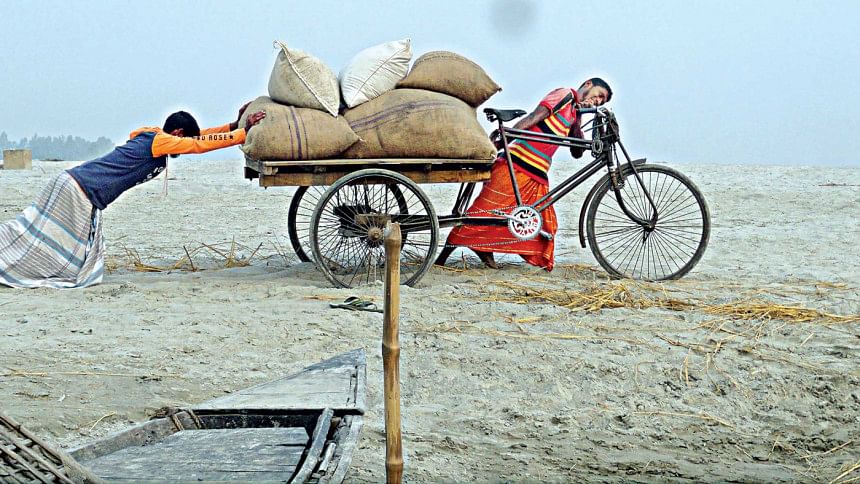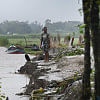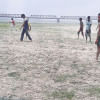Teesta sorrows everflowing

When Bangladesh and India were about to ink a deal on sharing the Teesta water in 2010, people living by the river in Rangpur region dreamt of better days.
But as political considerations came into play on the other side of the border, the deal was never signed. Meanwhile, India keeps making empty promises about the deal as farmers in northern Bangladesh wait for a time when they will be able to irrigate their lands with Teesta water round the year.
Abdul Hakim, 68, a resident of Kalmati village in Lalmonirhat, has 16 bighas of land on the banks of the Teesta. But he can grow crops only on less than 5 bighas once a year. The rest remains either submerged or too dry for cultivation.
"Water flows in the Teesta at the wrong time of the year. From January to April, when we need irrigation, there is nothing," he told The Daily Star recently.
Meher Ali, 65, a farmer in Rajarhat, Kurigram, said people in his area suffer floods and erosion during the monsoons and scarcity of water during the dry season.
As India almost completely blocks water flow at the Gajoldoba barrage during the dry season, the Teesta runs dry. But in the monsoon, the Teesta swells and becomes up to 10 km wide in places.
According to Bangladesh India Joint Rivers Commission, between 1973 and 1985 when the barrage was yet to be built in West Bengal, the daily average flow of water in the river during the last 10 days of March was 6,710 cusec (cubic feet per second).
In 2012 and 2013, it dropped to 3,506 cusec and 2,950 cusec. On March 22, 2015, only 232 cusec water flowed in the Teesta, the lowest in history. The last 10 days of March is recognised as the height of lean season in Bangladesh.
According to the Department of Agriculture Extension, about 60 percent of an estimated 90,000 hectares of land on the banks of the Teesta remains unutilised in the dry season.
Asfa Uddoula, executive engineer of the Water Development Board in Dalia, Lalmonirhat, said from mid-June to September, the flow usually hovers between 60,000 cusec and 65,000 cusecs.
The flow starts to dwindle in October and by December, and the Teesta dries up. To meet the irrigation needs, the flow should be over 5,000 cusecs. "We have been getting 1200-1500 cusecs during the dry season for the last five years," he said.
Boatman Quader Mandal, 55, of Gobardhan area of Aditmari, Lalmonirhat, told The Daily Star that the river remains navigable only for 4-5 months a year.
Hundreds of fishermen also have to look for other work during the lean season, locals said.
Shafiar Rahman, general secretary of "Teesta Bachao, Nadi Bachao Sangram Parishad", said several lakh people of 13 upazilas of Lalmonirhat, Kurigram, Nilphamari, Gaibandha and Rangpur get affected as the river runs dry for months every year.
Syeda Rizwana Hasan, chief executive of Bangladesh Environment Lawyers Association, said Indian authorities surveyed the water flow of the Teesta in 2012, but had not published the report. "We do not even know whether our government asked for the report… It seems our people will continue to suffer," she said.
AKM Enamul Hoque Shameem, deputy minister for water resources, last month participated in a meeting of the Bangladesh India Joint Rivers Commission. He said India again made promises of a Teesta deal.


 For all latest news, follow The Daily Star's Google News channel.
For all latest news, follow The Daily Star's Google News channel. 







Comments